Janu Sirsasana, or Head-to-Knee Pose, is a fundamental forward fold in yoga practice. This basic position has several advantages to the physical body and the mind.
By including Janu Sirsasana in your yoga schedule, you may increase flexibility, enhance circulation, and achieve inner calm.
Table of Contents
ToggleThe Meaning of Janu Sirsasana
The name Janu Sirsasana originates from the Sanskrit language, where “Janu” translates to knee, “Sirsa” means head, and “Asana” signifies posture. Therefore, the literal translation of Janu Sirsasana is Head-to-Knee Pose, perfectly capturing the essence of the pose.
The Benefits of Janu Sirsasana
Janu Sirsasana provides several benefits that can improve your well-being. Let’s go on a voyage to discover these benefits:
Increased Flexibility: One of the key advantages of Janu Sirsasana is the deep stretch it delivers to the hamstrings, which are the muscles at the back of your legs. As you fold forward in the position, these muscles lengthen and relax, increasing your overall flexibility. This increased flexibility can help with activities such as walking, jogging, and even prolonged sitting.
Stress Reduction and Inner Peace: Holding Janu Sirsasana promotes a slow release of tension throughout the body. This physical release can also lead to a feeling of mental calm and inner serenity. The pose’s emphasis on deep breathing helps to reduce tension and promote awareness.
Janu Sirsasana is thought to stimulate the digestive organs in the belly. This moderate stimulation helps improve digestion and overall gut health.
Strengthened Core: While Janu Sirsasana focuses on the front fold, activating your core muscles is essential for maintaining appropriate posture in the pose. Regular practice can help develop your core muscles, resulting in improved stability and balance.
Increased Circulation: The forward fold in Janu Sirsasana promotes new blood flow to the head and upper torso. This improved circulation can enhance cognitive performance, alleviate headaches, and boost general health.
Improved Spinal Health: Janu Sirsasana promotes spine stretching while also encouraging good posture and alignment. The posture, which stretches the muscles that support the spine, can help relieve lower back pain.
The Different Versions of Janu Sirsasana
Janu Sirsasana has several adjustments and adaptations to accommodate different levels of flexibility and physical constraints.
Here are a few frequent variables to consider:
Janu Sirsasana with a Strap:
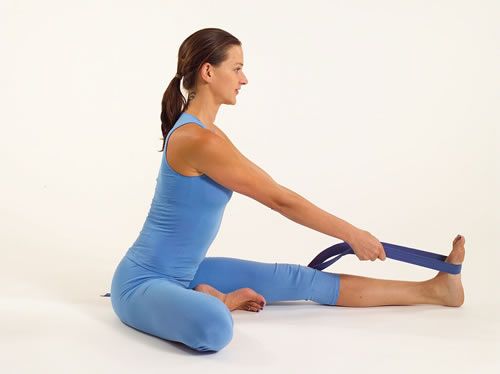
If reaching your foot with your hand is difficult, use a yoga strap. Loop the strap over your foot and carefully hold it while folding forward. The strap will help you to get a deeper stretch without straining.
Janu Sirsasana with a Bolster:
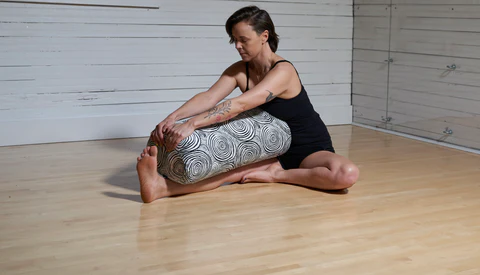
To offer support and comfort, insert a yoga bolster beneath your outstretched leg. This elevation can reduce strain on the lower back and allow for a more relaxed forward fold.
Parivrtta Janu Sirsasana (Revolved Head-to-Knee Pose)
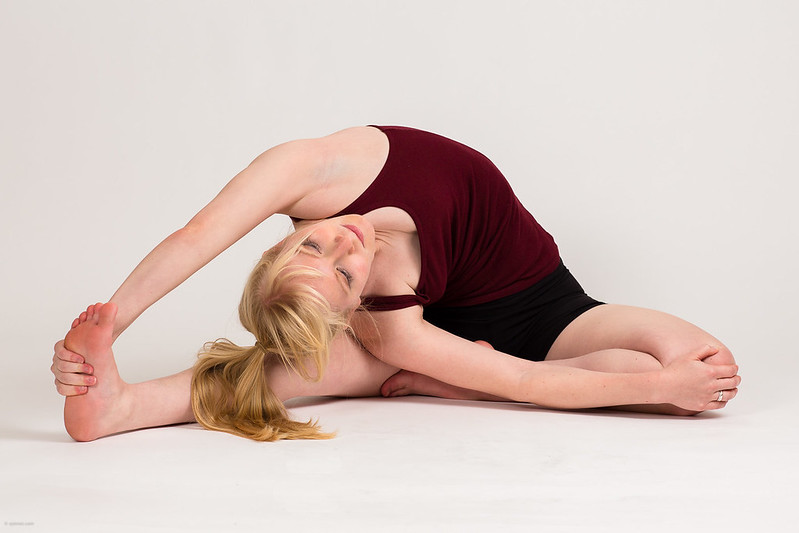
Parivrtta Janu Sirsasana (Revolved Head-to-Knee Pose) is a variant on the conventional Janu Sirsasana. After extending one leg, rotate your torso towards it and stretch your opposing arm towards your back. This variant offers a deeper stretch along the side of the body and spine.
Always remember to listen to your body and make changes that seem comfortable and safe.
Step-by-Step Guide to Janu Sirsasana:
Begin with Dandasana (staff pose): Sit on a yoga mat, legs out in front of you, feet together. Maintain a straight spine and stretch your neck.
Extend one leg. Straighten one leg out in front of you, with the heel firmly planted against the mat. Flex the other foot and set it flat on the floor next to your hip.
Engage your core. Draw your navel in towards your spine to activate your core muscles. This will protect your lower back from the forward fold.
Take a deep inhale and stretch your spine upward. Maintain a straight back and avoid hunching the shoulders.
Exhale and Fold Forward: As you exhale, bend at your hips and gently fold forward, bringing your chest towards your outstretched leg. Concentrate on stretching your spine rather than rounding your back.
Reach for your foot or strap. Extend your hands and reach for your foot. If necessary, use a yoga strap wrapped over your foot for
Precautions:
While Janu Sirsasana has many advantages, it is essential to practice with mindfulness and awareness to avoid injury. Here are some measures to consider:
Avoid Overstretching: As with any yoga position, don’t force your body into deep stretches. Listen to your body and accept its limitations. Overstretching can cause strain or damage.
Modify as needed: If your hamstrings or hip flexors are tight, utilize supports like yoga blocks or straps to help you practice. To make the forward fold easier, lay a block beneath your sitting bones or thread a strap around your foot.
Engage Core Muscles: To support your lower back, engage the core muscles throughout the position. Drawing the navel nearer the spine helps to stabilize the pelvis and support the forward fold.
Avoid Jerky Movements: When entering and exiting Janu Sirsasana, proceed consciously to avoid jerky or sudden movements. Smooth, steady transitions reduce tension and encourage relaxation.
Conclusion:
Janu Sirsasana is a classic yoga position that represents the concepts of surrender, introspection, and self-awareness. This asana provides a wide range of physical, mental, and spiritual benefits because to its mild yet profound stretch.
On and off the mat, we may improve flexibility, strength, and inner serenity by practicing Janu Sirsasana mindfully and with respect for the body’s limits. So, lay out your yoga mat, take a seat, and surrender to the wisdom inside as you embark on the transforming practice of Janu Sirsasana.
Frequently Asked Questions ?
Janu Sirsasana, also known as the Head-to-Knee Pose, is a yoga pose that strengthens the hamstrings, improves flexibility, stimulates the abdominal organs, and calms the mind. It promotes digestion, detoxification, and relaxation, reducing insomnia and improving sleep.
Whether a beginner or an experienced yogi, incorporating Janu Sirsasana into your practice can foster a deeper sense of balance, flexibility, and inner peace.
Janu Sirsasana, or the Head-to-Knee Pose, can be held for 30 seconds to 1 minute on each side in yoga classes or personal practice sessions.
It can be adjusted based on the practitioner’s experience and comfort level. Beginners may start with shorter holds, gradually increasing as they become more familiar. Janu Sirsasana can be integrated into a flowing sequence or held longer during restorative or yin yoga practices.
Janu Sirsasana, or the Head-to-Knee Pose, can be beneficial when practiced mindfully and with proper alignment.
However, it can strain the knee joint, lower back, hamstrings, and abdominal organs. Overstretching of hamstrings and incorrect alignment can increase the risk of strain or injury. To maintain overall well-being, it’s essential to maintain a balanced approach, consult with a qualified instructor, and listen to one’s body.
Janu Sirsasana and Paschimottanasana are seated forward bends in yoga, targeting different areas of the body. Janu Sirsasana targets the hamstrings of the extended leg, groin, and inner thighs, while Paschimottanasana targets the entire posterior chain, including the hamstrings, lower back, and spine. Both poses have slightly different variations in leg position, hip alignment, hand placement, and intensity of stretch.
Janu Sirsasana focuses on one side of the body at a time, making it gentler for individuals with tighter hamstrings or limited flexibility. Paschimottanasana, on the other hand, provides a deeper stretch along the entire back, requiring greater flexibility and strength in the hamstrings and lower back. Practitioners can choose the pose that best suits their individual needs and level of flexibility.

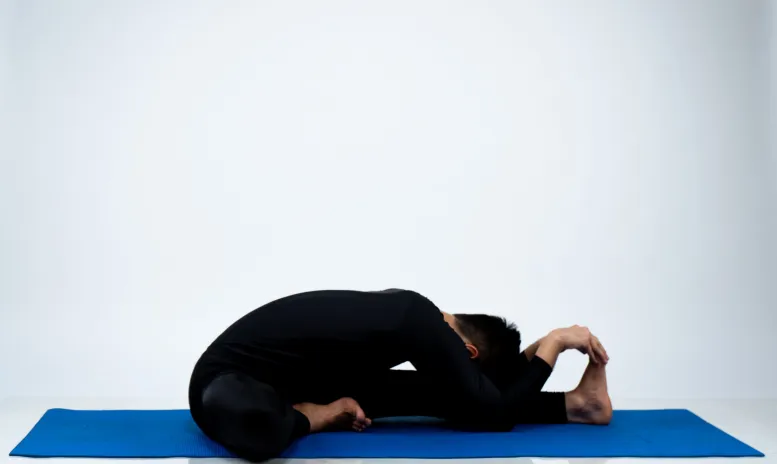
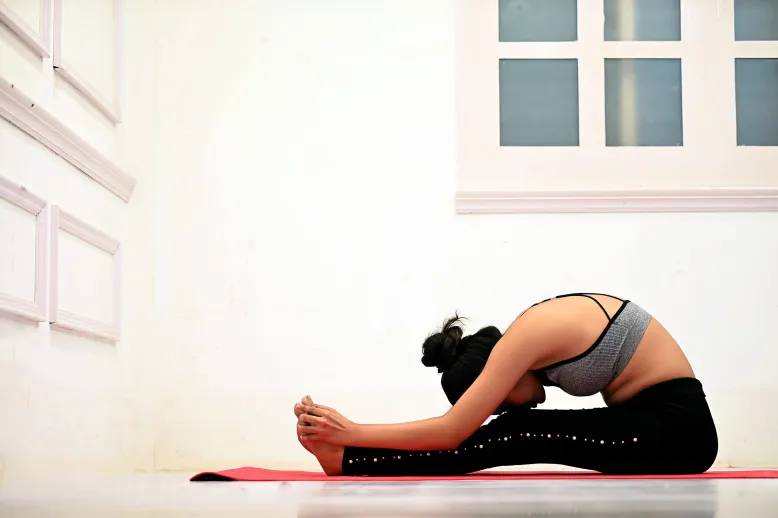
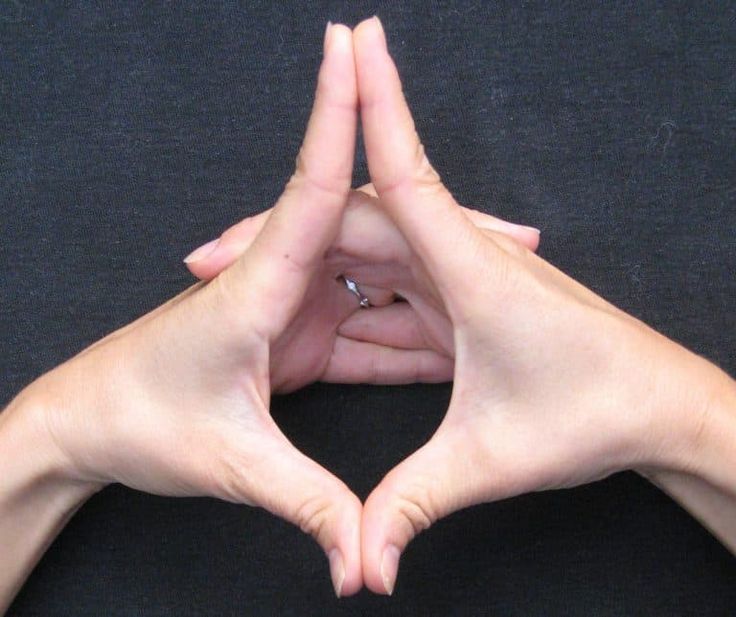
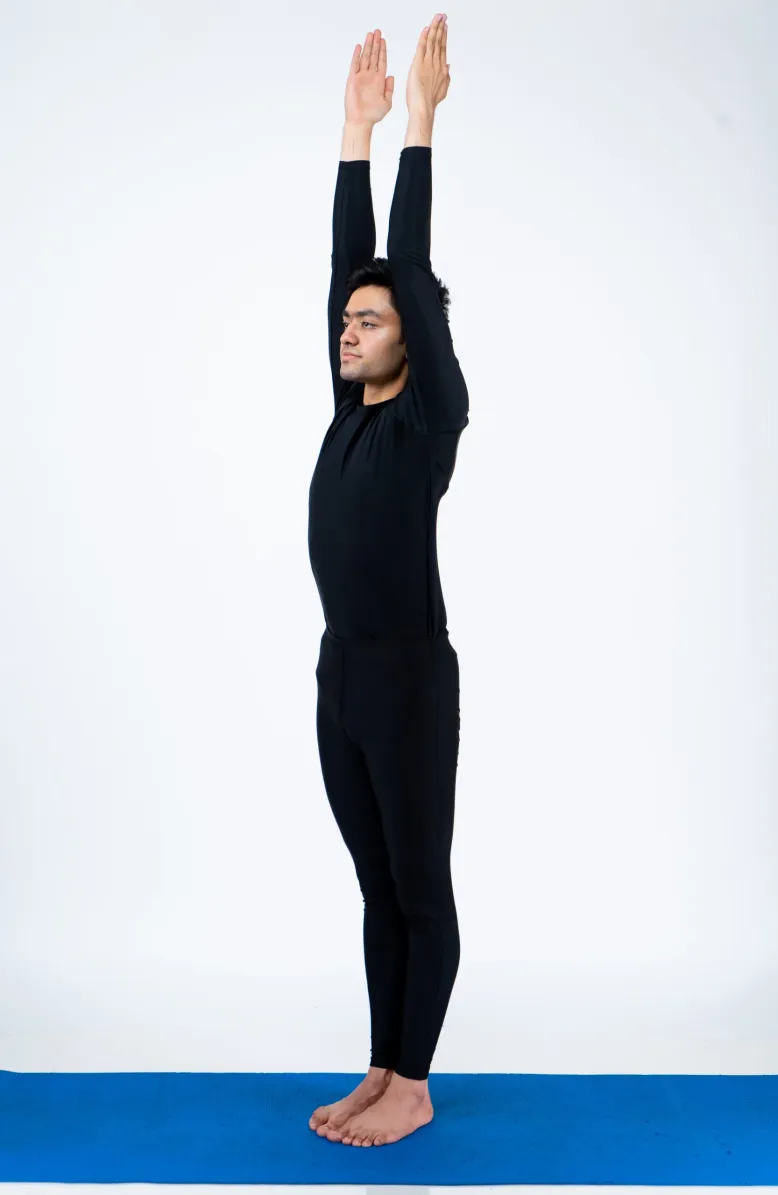
No Comments